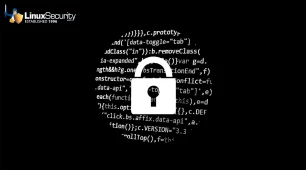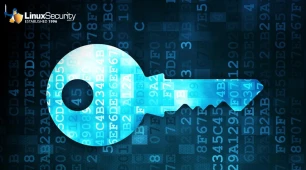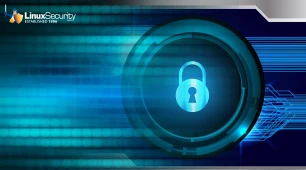-----BEGIN PGP SIGNED MESSAGE-----
Hash: SHA1
______________________________________________________________________________
SUSE Security Announcement
Package: kdebase3-kdm
Announcement ID: SUSE-SA:2006:039
Date: Mon, 03 Jul 2006 16:00:00 +0000
Affected Products: Novell Linux Desktop 9
SUSE LINUX 10.1
SUSE LINUX 10.0
SUSE LINUX 9.3
SUSE LINUX 9.2
SUSE LINUX 9.1
SUSE SLES 9
Vulnerability Type: local privilege escalation
Severity (1-10): 7
SUSE Default Package: yes
Cross-References: CVE-2006-2449
Content of This Advisory:
1) Security Vulnerability Resolved:
KDM local information exposure
Problem Description
2) Solution or Work-Around
3) Special Instructions and Notes
4) Package Location and Checksums
5) Pending Vulnerabilities, Solutions, and Work-Arounds:
See SUSE Security Summary Report.
6) Authenticity Verification and Additional Information
______________________________________________________________________________
1) Problem Description and Brief Discussion
The KDE Display Manager KDM stores the type of the previously used
session in the user's home directory.
By using a symlink a local attacker could trick kdm into also storing
content of files that are normally not accessible by users, like for
instance /etc/shadow.
This problem is tracked by Mitre CVE ID CVE-2006-2449 and was
found by Ludwig Nussel of the SUSE Security Team.
2) Solution or Work-Around
There is no known workaround, please install the update packages.
3) Special Instructions and Notes
Please restart all running instances of kdm after the update.
4) Package Location and Checksums
The preferred method for installing security updates is to use the YaST
Online Update (YOU) tool. YOU detects which updates are required and
automatically performs the necessary steps to verify and install them.
Alternatively, download the update packages for your distribution manually
and verify their integrity by the methods listed in Section 6 of this
announcement. Then install the packages using the command
rpm -Fhv
to apply the update, replacing with the filename of the
downloaded RPM package.
x86 Platform:
SUSE LINUX 10.1:
6b51aa1795da71a71119cf6aa6820153
SUSE LINUX 10.0:
5b36c9bc7cee1cdde72d7ad70860d596
SUSE LINUX 9.3:
f5a7cc054bf5223057e36aeef4bb2e55
SUSE LINUX 9.2:
e3b919080e181d5854526410675e116e
SUSE LINUX 9.1:
247b449b8b6142ff9ee413acbd4efc57
Power PC Platform:
SUSE LINUX 10.1:
6db4614fe15867245801e17c72e9c8bd
SUSE LINUX 10.0:
6366c0536eb41220bd1686513fe6e2c1
x86-64 Platform:
SUSE LINUX 10.1:
6c31f10bd18a53f585a1cc6ac45ccbe4
SUSE LINUX 10.0:
f606da7a6561ec09fbbb70a467da1790
SUSE LINUX 9.3:
fece9cedbe4033094c62124d85fe37cd
SUSE LINUX 9.2:
421cfc9dcacc8d1a59009cc849182297
SUSE LINUX 9.1:
3456c10099c7c075ef2653e750f0ad72
Our maintenance customers are notified individually. The packages are
offered for installation from the maintenance web:
Novell Linux Desktop 9
SUSE SLES 9
______________________________________________________________________________
5) Pending Vulnerabilities, Solutions, and Work-Arounds:
See SUSE Security Summary Report.
______________________________________________________________________________
6) Authenticity Verification and Additional Information
- Announcement authenticity verification:
SUSE security announcements are published via mailing lists and on Web
sites. The authenticity and integrity of a SUSE security announcement is
guaranteed by a cryptographic signature in each announcement. All SUSE
security announcements are published with a valid signature.
To verify the signature of the announcement, save it as text into a file
and run the command
gpg --verify
replacing with the name of the file where you saved the
announcement. The output for a valid signature looks like:
gpg: Signature made using RSA key ID 3D25D3D9
gpg: Good signature from "SuSE Security Team "
where is replaced by the date the document was signed.
If the security team's key is not contained in your key ring, you can
import it from the first installation CD. To import the key, use the
command
gpg --import gpg-pubkey-3d25d3d9-36e12d04.asc
- Package authenticity verification:
SUSE update packages are available on many mirror FTP servers all over the
world. While this service is considered valuable and important to the free
and open source software community, the authenticity and the integrity of
a package needs to be verified to ensure that it has not been tampered
with.
There are two verification methods that can be used independently from
each other to prove the authenticity of a downloaded file or RPM package:
1) Using the internal gpg signatures of the rpm package
2) MD5 checksums as provided in this announcement
1) The internal rpm package signatures provide an easy way to verify the
authenticity of an RPM package. Use the command
rpm -v --checksig
to verify the signature of the package, replacing with the
filename of the RPM package downloaded. The package is unmodified if it
contains a valid signature from build@suse.de with the key ID 9C800ACA.
This key is automatically imported into the RPM database (on
RPMv4-based distributions) and the gpg key ring of 'root' during
installation. You can also find it on the first installation CD and at
the end of this announcement.
2) If you need an alternative means of verification, use the md5sum
command to verify the authenticity of the packages. Execute the command
md5sum
after you downloaded the file from a SUSE FTP server or its mirrors.
Then compare the resulting md5sum with the one that is listed in the
SUSE security announcement. Because the announcement containing the
checksums is cryptographically signed (by security@suse.de), the
checksums show proof of the authenticity of the package if the
signature of the announcement is valid. Note that the md5 sums
published in the SUSE Security Announcements are valid for the
respective packages only. Newer versions of these packages cannot be
verified.
- SUSE runs two security mailing lists to which any interested party may
subscribe:
suse-security@suse.com
- General Linux and SUSE security discussion.
All SUSE security announcements are sent to this list.
To subscribe, send an e-mail to
.
suse-security-announce@suse.com
- SUSE's announce-only mailing list.
Only SUSE's security announcements are sent to this list.
To subscribe, send an e-mail to
.
For general information or the frequently asked questions (FAQ),
send mail to or
.
==================================================================== SUSE's security contact is or .
The public key is listed below.
====================================================================





















